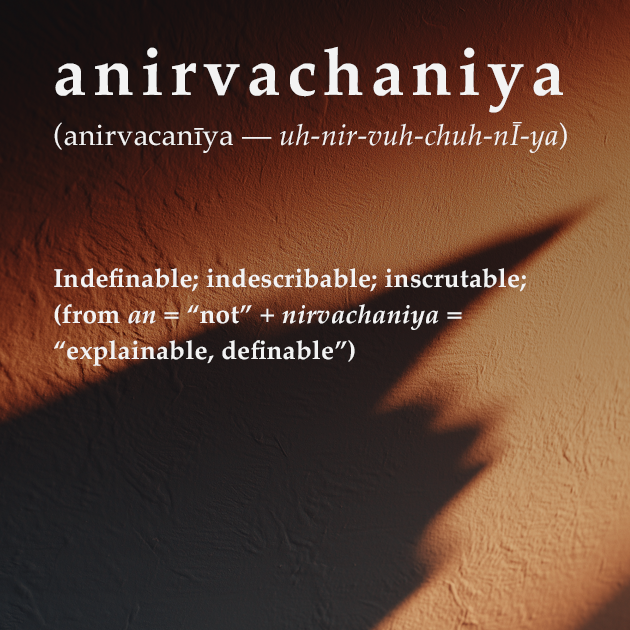Anirvachaniya - The Indescribable Status of the World
- Daniel McKenzie

- Sep 13
- 2 min read
Updated: Dec 11

In Advaita Vedanta, anirvachaniya (anirvacanīya) means indescribable, inexpressible. The term is most often used to describe mithya — the ontological status of the world.
When we ask, “Is the world real?” the answer is paradoxical. From the standpoint of vyavahara (transactional reality), it is real enough to live in: fire burns, water quenches, actions yield results. But from the standpoint of paramarthika satya (absolute reality), the world cannot be ultimately real, since it is changing, dependent, and negated by knowledge. Nor can it be dismissed as completely unreal, like a barren woman’s son.
Thus, the world is anirvachaniya — neither absolutely real nor unreal, but indescribable. It appears by the power of maya, like a rope mistaken for a snake. The snake is not real, because knowledge of the rope cancels it; yet it is not entirely unreal, because the fear it produces is experienced.
Shankara and later Advaitins highlight this term to show the limits of binary categories. The intellect demands either/or answers, but reality as revealed in Vedanta transcends these opposites. By declaring the world anirvachaniya, Advaita prevents us from absolutizing appearances while still affirming their empirical role.
Root & Meaning
From an (not) + nirvacanīya (explainable, definable).
Anirvacanīya = indefinable, indescribable, inscrutable.
Scriptural References
Though the exact word may not appear in the early Upanishads, it is emphasized in later Advaita works:
Shankara's commentaries use the rope–snake example to show the anirvacanīya nature of the world.
Vivekachudamani (108–112): speaks of the world as neither real nor unreal.
Panchadashi (6.18): explicitly describes maya as anirvachaniya.
Traditional View
Anirvachaniya is the ontological status of mithya.
Applies to the world as projected by maya.
It is real for transaction, unreal from the absolute standpoint, and thus not fully classifiable.
Vedantic Analysis
Common Misunderstandings
That anirvachaniya means mystical or vague: It is a precise philosophical category to account for empirical reality.
That anirvachaniya denies the world’s existence: It does not deny appearances, only their absolute status.
That anirvachaniya = subjective dream only: It includes the shared empirical order governed by Ishvara.
Vedantic Resolution
The world is anirvachaniya — not ultimately real, not utterly unreal, but dependent, provisional, and indescribable. Recognizing this frees the seeker from both naïve realism and nihilism, orienting them toward Brahman as the only reality.
Reflection: When Logic Stops
Anirvachaniya marks the limit of logic in Vedanta. The world is neither fully real nor unreal, and ignorance (avidya) itself cannot be explained. Questions such as “Why does maya exist?” or “Why creation?” have no ultimate answer — because any reason presupposes something outside Brahman, which is impossible.
Here, Vedanta bows to mystery. The answer is: we don’t know — and we don’t need to. What matters is not why the illusion appears, but who we are amidst it. The inquiry into “Who am I?” has a definitive resolution: the Self as pure awareness.
In this way, anirvachaniya prevents endless speculation, humbles the intellect, and points us back to the direct recognition of the Self.
